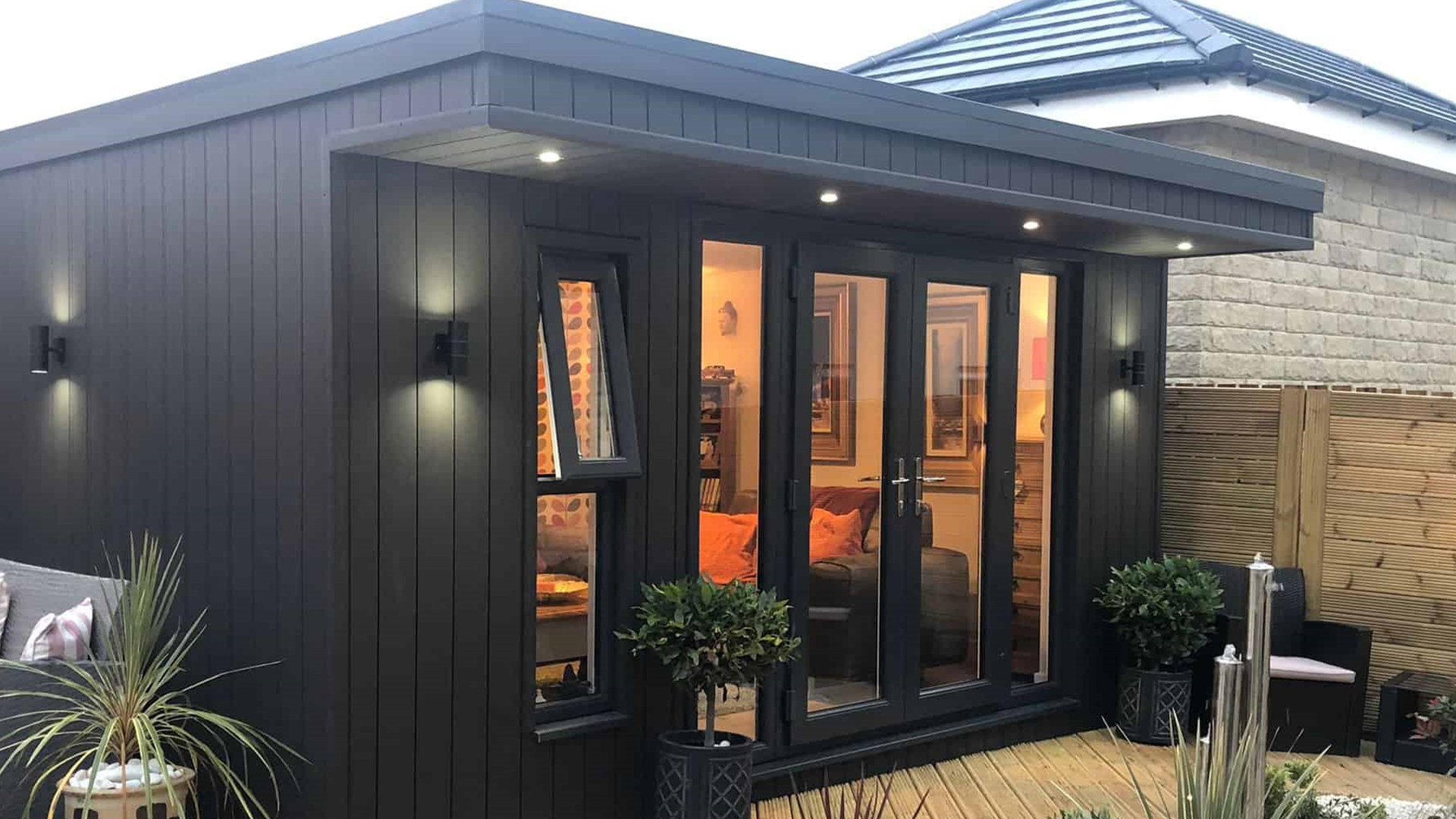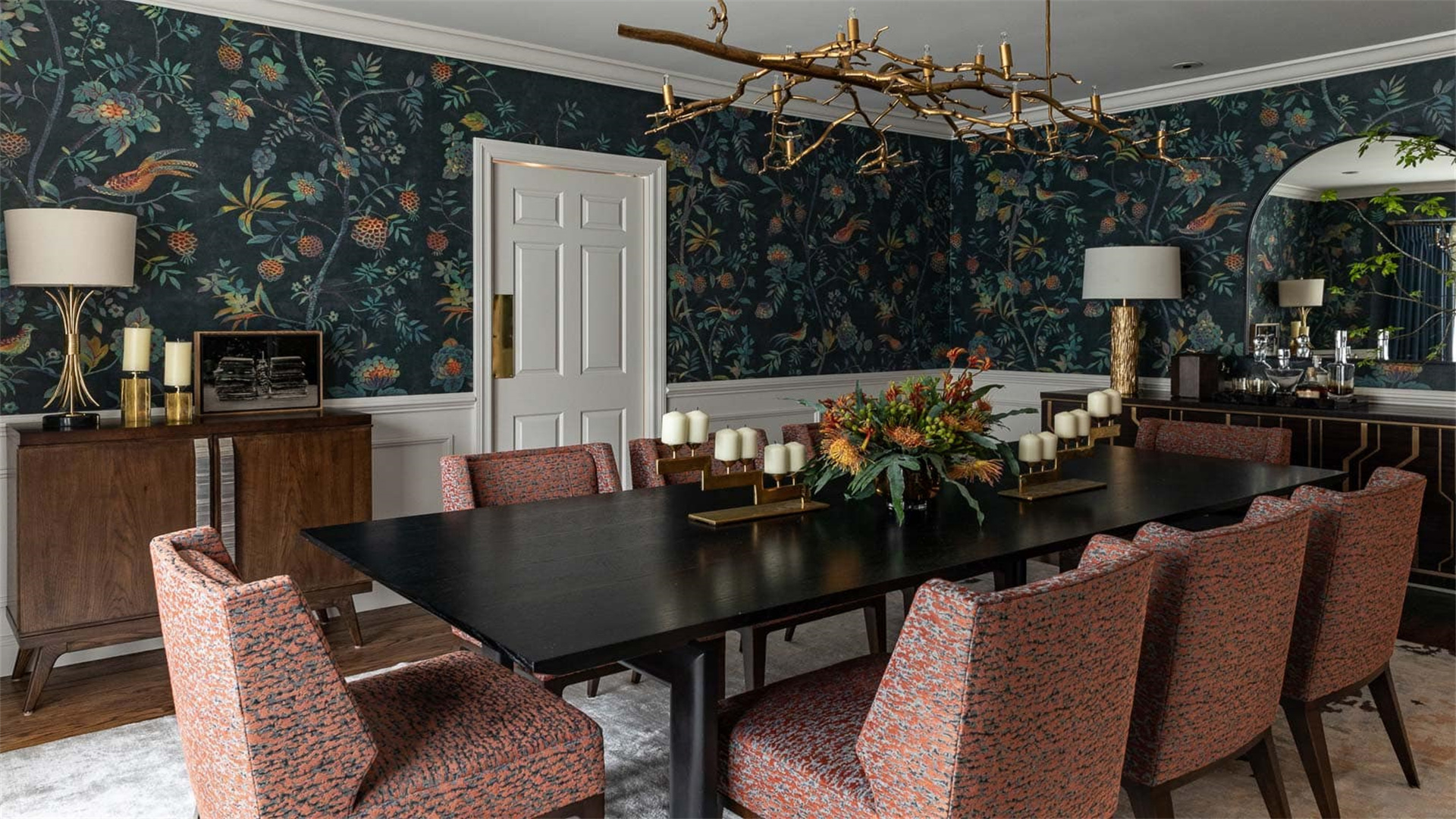5 Practical Tips to Build a High-Quality Home Theater and Recreate the Cinema Experience at Home
With modern audio-visual technology advancing rapidly, many people are eager to recreate the cinematic feeling right in their own homes. A true home theater, however, is much more than a collection of expensive gadgets—it requires careful planning, thoughtful design, and proper installation. To help you transform an ordinary room into a powerful entertainment space, this expanded guide explains everything you need to know to build a premium home theater that offers immersive visuals and theater-grade sound.

1. Select the Best Room for Your Setup
Choosing where to place your home theater is the first step—and one of the most important. The room directly affects the acoustics, picture quality, and comfort of your viewing experience.
Room Dimensions and Shape
For optimal performance, pick a room with a reasonable amount of space and a layout that works well for sound distribution. Long, rectangular rooms tend to outperform rooms with square dimensions because they help sound waves travel more naturally from the front to the back, minimizing echo and distortion. Larger rooms also give you more freedom with seating layouts, speaker placement, and screen size.
Recommendation:
Aim for a room that measures approximately 20–30 square meters, which allows for comfortable seating arrangements and robust sound performance.
Light Management
Light control is equally important. Excessive daylight or reflective surfaces can wash out the screen, reducing image contrast. A dedicated home theater should have controllable lighting, ideally with blackout curtains or heavy drapes that block sunlight during daytime viewing. Layered lighting—such as dimmable overhead lights or LED strips—helps set the mood and creates the same cozy ambiance you enjoy in commercial cinemas.
Recommendation:
Choose curtains with a dense black lining to ensure maximum light blocking and to maintain image clarity.
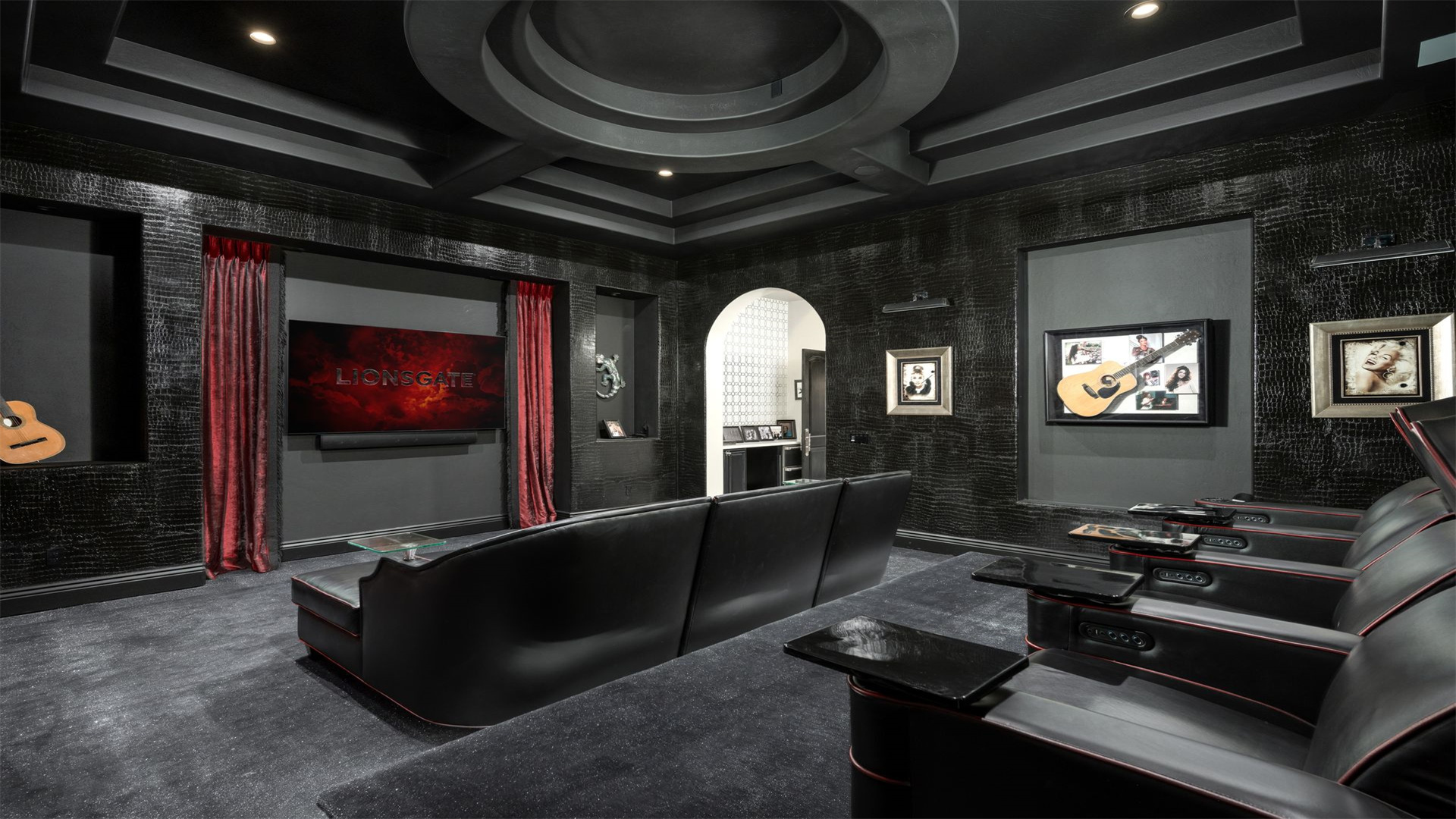
2. Select High-Performance Equipment
The heart of your home theater lies in its equipment. To get cinema-level quality, each component should be chosen with care.
Display Options
Your screen will define the visual experience. Projectors are excellent for medium to large rooms where you want a massive picture and a cinema-like atmosphere. For smaller rooms or spaces with inconsistent lighting, a high-quality TV may be the better option.
Recommendation:
Opt for 4K resolution or higher to ensure crisp visuals, vivid colors, and sharp image details.
Sound System
Audio is arguably the most essential part of the home theater experience. A powerful surround sound setup makes movies more realistic and helps transport you into the story. Systems with 5.1 or 7.1 channels are common choices, placing speakers around the room to create directional and immersive sound. A subwoofer adds depth to explosions, music, and effects.
Recommendation:
Consider reputable brands like Bose, Sonos, Yamaha, and similar professional audio manufacturers for reliable and high-quality sound.
Media Sources and Playback Devices
Your playback device should support a range of media formats, from Blu-ray discs to modern streaming platforms. A versatile player with 4K UHD support ensures that you can view the newest films and shows at their highest quality.
Recommendation:
Add a streaming device such as Apple TV, Roku, or Amazon Fire Stick to easily access your preferred apps and high-resolution content.
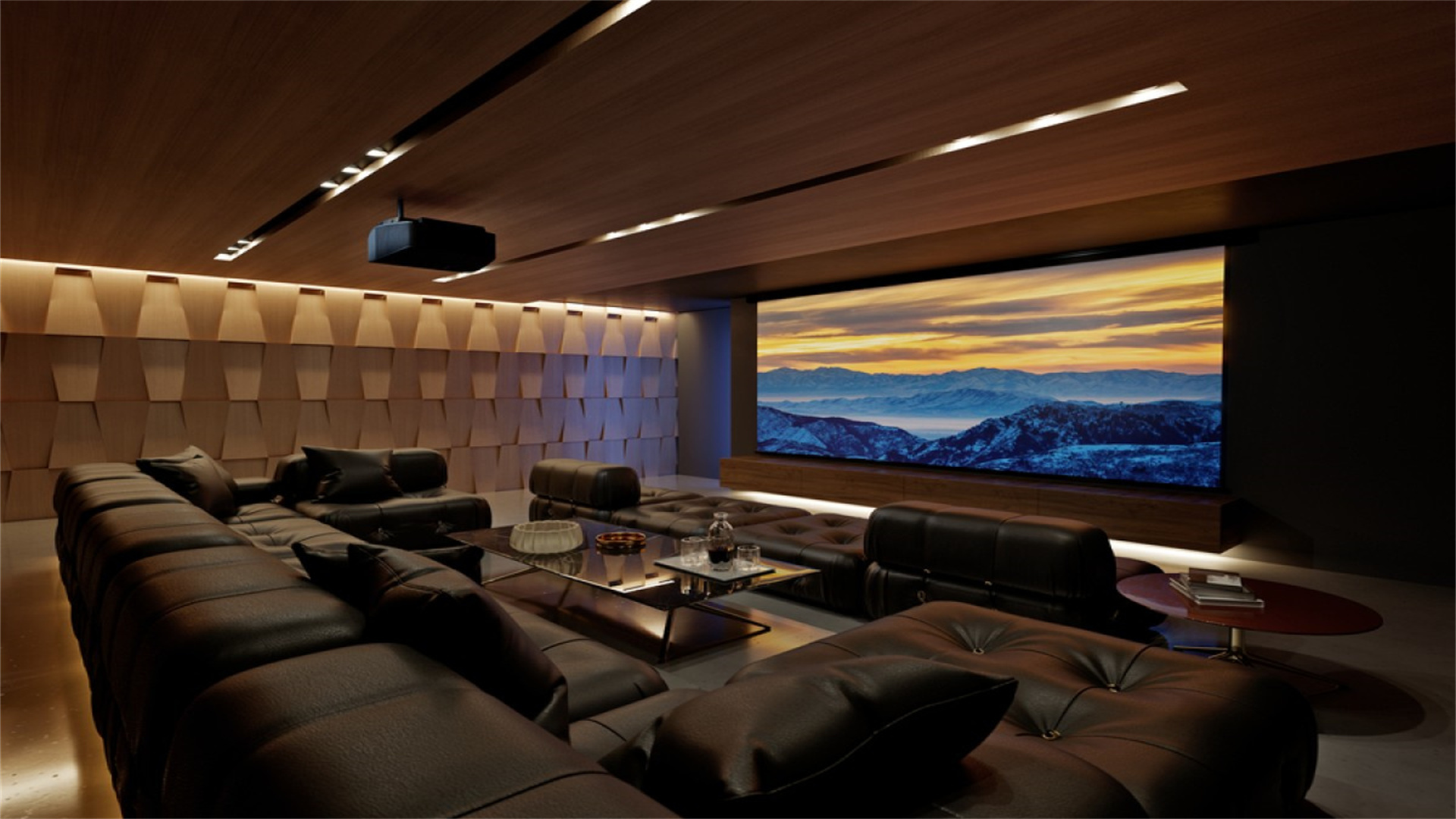
3. Organize and Install Your Equipment Effectively
A well-designed layout makes your home theater look professional and maximizes performance.
Projector and Screen Installation
If you’re using a projector, mount it securely at the rear of the room or on the ceiling, adjusting the distance based on its throw ratio. The screen should be installed at a height that matches the viewer’s line of sight. A slightly angled tilt may help reduce glare and enhance comfort.
Recommendation:
Use sturdy stands, mounts, or brackets specifically designed for projectors and screens to prevent wobbling or misalignment.
Speaker Placement
Proper speaker arrangement is essential for precise audio imaging.
Front speakers belong at the left, right, and center of the screen.
Surround speakers should be positioned behind or beside the seating area.
Subwoofers can go in front or along the side walls, depending on the room’s acoustics.
Recommendation:
Mount speakers on dedicated stands or wall brackets for accurate height and angle positioning.
Seating Setup
Comfortable seating ensures long-duration viewing without fatigue. Recliners, dedicated home theater chairs, or well-padded sofas all work as long as they allow clear views of the screen. The distance between the seats and the screen should be proportional to screen size.
Recommendation:
Plan enough space between rows or seats for easy movement and consistent audio coverage.
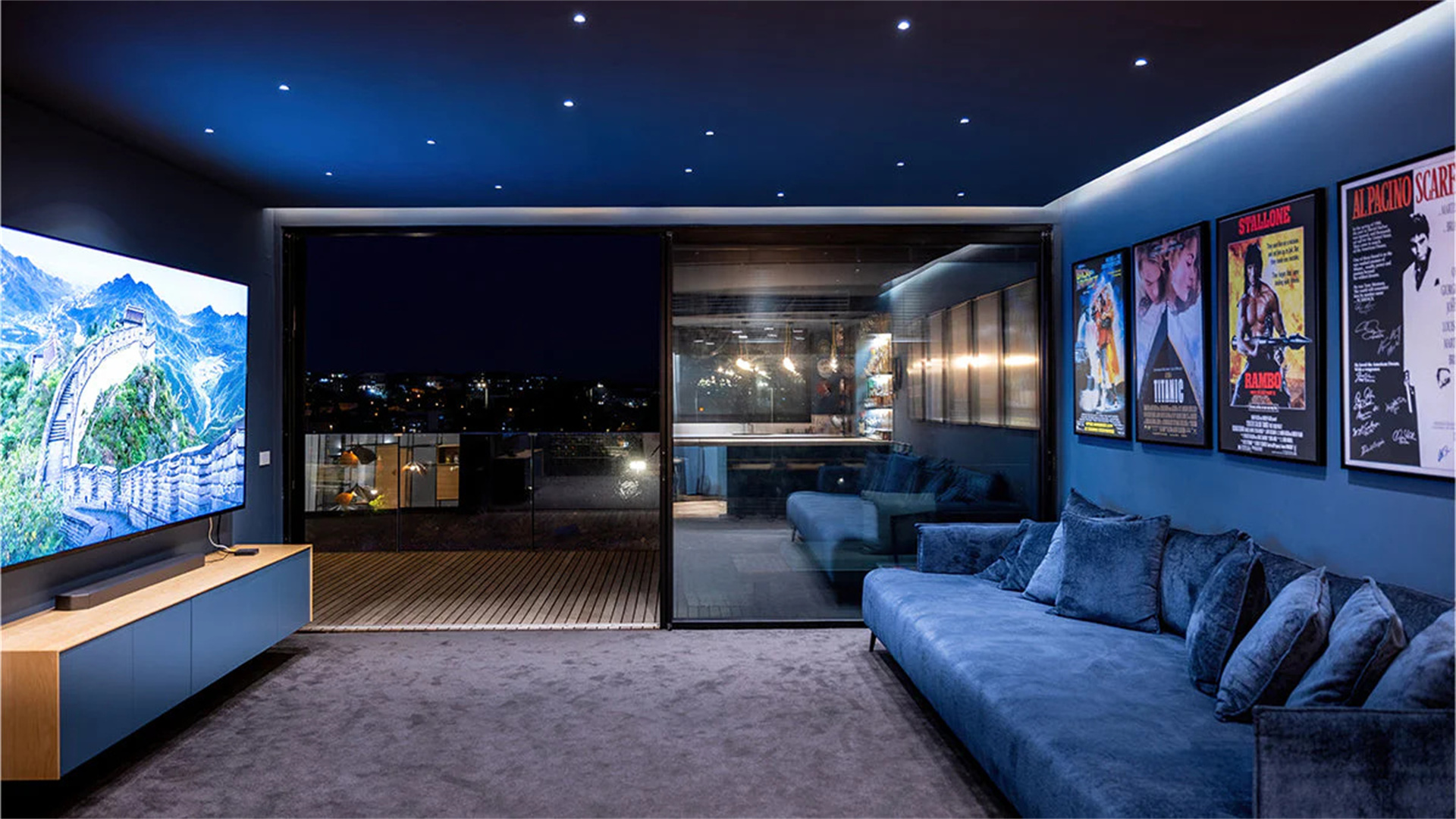
4. Improve Picture and Sound Quality
Even with good hardware, fine-tuning your environment can dramatically enhance the viewing experience.
Acoustic Enhancements
Hard walls and bare floors cause echoes and unwanted reflections. To counter these issues, incorporate sound-absorbing décor elements such as acoustic panels, carpets, and thick curtains. Bass traps can be added to the corners of the room to control low-frequency buildup, and weather-stripping on doors helps block outside noise.
Recommendation:
Select diffusers and soundproofing materials that balance absorption and reflection for a rich, cinematic sound.
Visual Calibration
To get the most accurate picture, calibrate your display’s brightness, color accuracy, contrast, and sharpness. Many enthusiasts use calibration tools that measure screen performance and adjust settings to achieve natural, lifelike images.
Recommendation:
Use professional calibration tools like SpyderX or CalMAN to fine-tune your display.
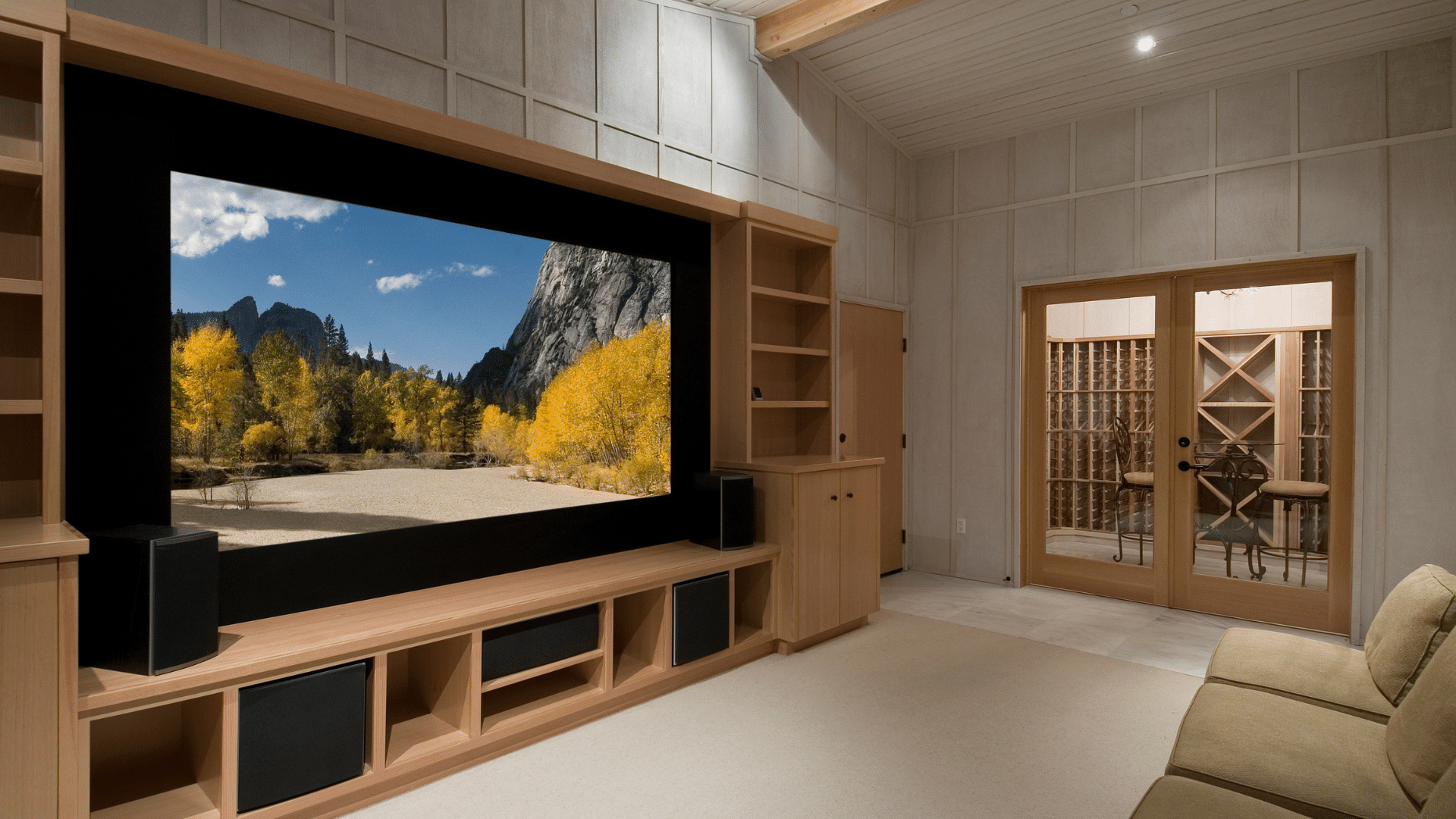
5. Smart Controls and Home Automation
Intelligent controls make your home theater smoother to operate and more enjoyable.
Unified Remote Systems
A smart remote or smartphone app allows you to control the TV or projector, audio system, lighting, and streaming device from one interface. This reduces clutter and makes the system intuitive and accessible for everyone in the household.
Recommendation:
Consider multi-device controllers such as Logitech Harmony to manage your entire setup seamlessly.
Automated Viewing Modes
You can program automated scenes that adjust lighting, curtains, and sound settings simultaneously with a single button. For example, you might have a “Movie Night” mode that dims overhead lights, closes curtains, powers on your surround sound, and launches your preferred streaming app instantly.
Recommendation:
Use Google Home, Amazon Alexa, or similar smart home platforms to create and activate custom viewing scenes.
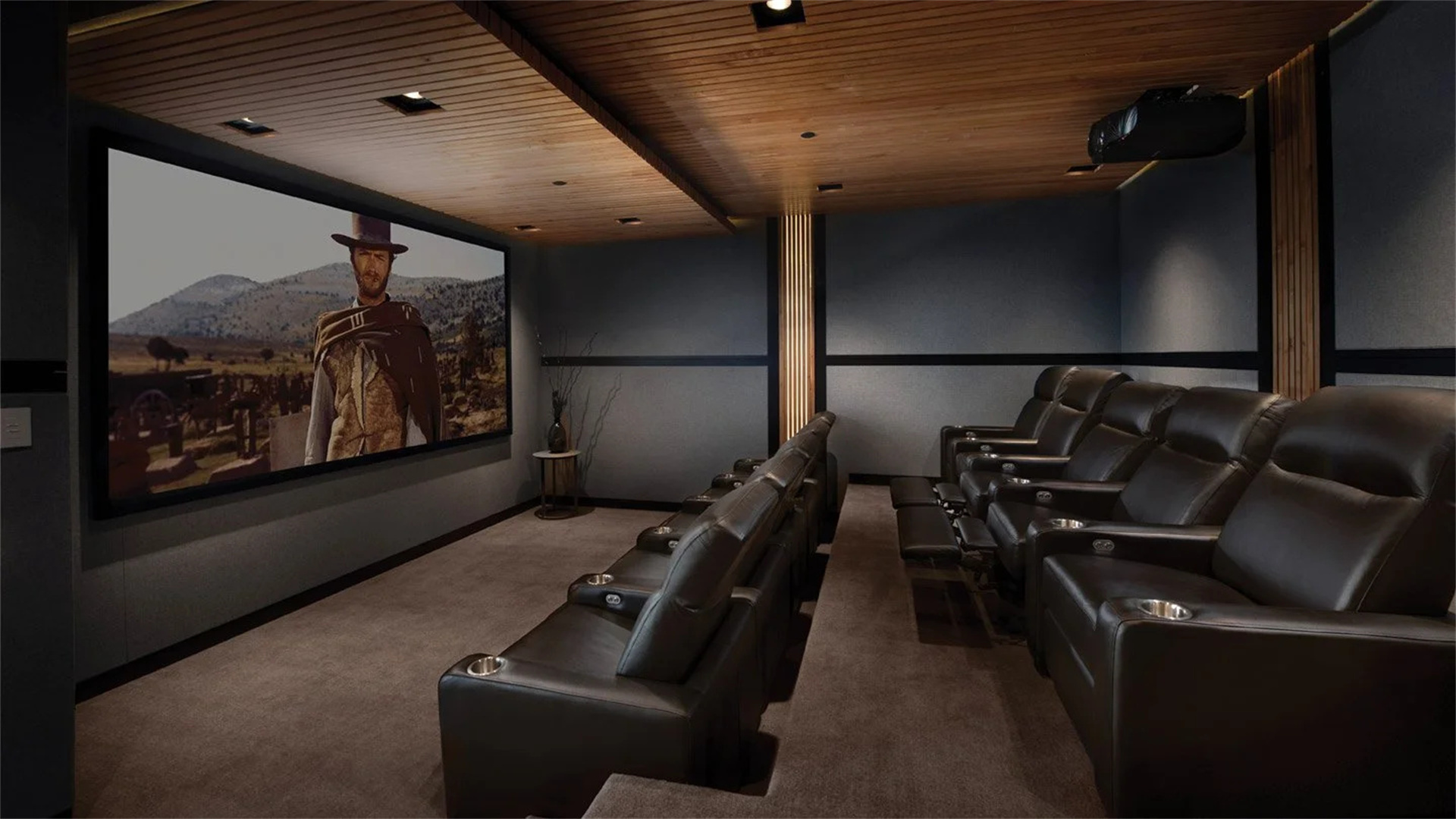
Enjoy a Professional Cinematic Experience at Home
Building a top-tier home theater requires thoughtful planning, the right equipment, and a bit of technical understanding, but the reward is an entertainment space that rivals a commercial cinema. Once everything is in place, you’ll be able to enjoy movies, games, concerts, and shows with breathtaking clarity and room-filling sound—all without leaving home.
With this guide, you now have a comprehensive roadmap to designing a home theater that delivers exceptional comfort, performance, and immersive enjoyment. If you invest time and effort into creating this space, it will become one of the most unforgettable and beloved areas of your home.





